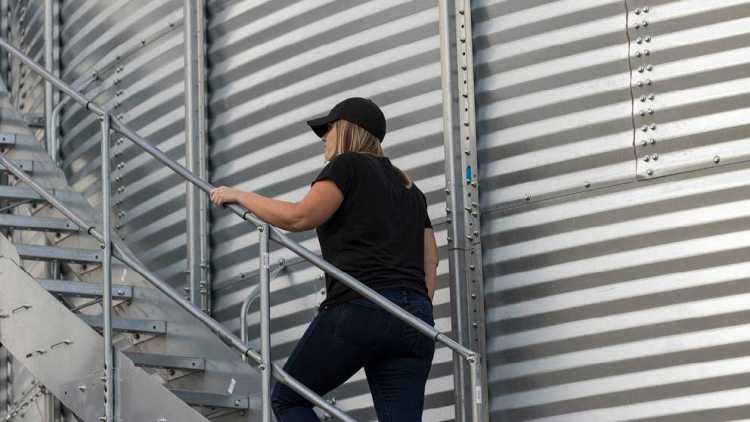Get fit for the mental and physical rigours of farming

Canadian farmers work long hours under stressful conditions. Are you physically fit enough to handle it? If not, don’t worry. Alberta farmer and fitness advocate Gary Chambers has your back.
“Fortunately, one of the great things about not being in good shape is that changes made initially are the most noticeable,” Chambers says. “If you commit to an exercise routine at three times a week for four to six weeks, you will notice a significant improvement in your overall health and wellness.”
A lifelong interest
For Chambers, a physical education grad of the University of Alberta, fitness has always been a priority. Growing up on the family grain farm near Drumheller, Alta., he was active in hockey and later got involved in cross-country ski racing and competitive cycling. Then, as often happens with young adults, parenthood and professional responsibilities intervened.
“In those six to eight years when my son was young, I was starting a real estate company while taking over the farm, and my health did deteriorate,” explains Chambers. “I packed on extra pounds and I wasn’t in a good place physically or mentally, despite having good success in my life.”
He decided to get fit and has kept it up ever since. Better physical conditioning has allowed Chambers to handle the rigours of farming.
“When your stress is high, and things don’t go well, it’s easy to focus on the negatives and neglect the physical aspect of wellness,” Chambers notes. “It’s proven that being in good health and the endorphins gained from exercise can change your outlook and allow you to better take things in stride.”
No gym nearby? No problem
For some people in rural Canada, limited access to a professional gym can be a barrier to getting fit. Chambers advises: set up your own gym on the farm.
It doesn’t have to be fancy. He suggests a home gym should include cardio equipment, like a treadmill, bike or a stepper, and a set of free weights with a flat bench. Chambers also likes to mix it up with a resistance-band system that hangs from the ceiling for a great workout.
After an initial investment in these fitness essentials, getting in shape on the farm is free. When you compare the investment to the benefits, Chambers calls it a no-brainer.
“Look at the hundreds of thousands – or millions – of dollars we invest in machinery,” Chambers says. “I think someone would be hard-pressed to debate the cost of a farm home gym. It’s not even a debit off your time because working out increases your productivity throughout the day.”
Chambers recommends a 60-minute workout first thing in the morning. Leaving it to the end of the day often means exercise never happens, he says, “because the day never ends for farmers.”
If 60 minutes sounds like a lot, Chambers recommends starting with small changes: a light jog with your pet or walking instead of driving to inspect a field. To him, the nuts and bolts of the workout are less important than establishing a positive habit. The more consistently you do it, the more quickly you’ll see the benefits.
“Like they say with investing, you have to pay yourself first,” Chambers says. “That’s true with exercise. Although we associate fitness with strength, we forget how much being in good shape also impacts our mental health.”
From an AgriSuccess article by Kieran Brett.

Producer Cynthia Beck, a suicide intervention responder in rural Saskatchewan, explains how being proactive and facing challenges as they arise can help manage the impact of continual change in our lives.
